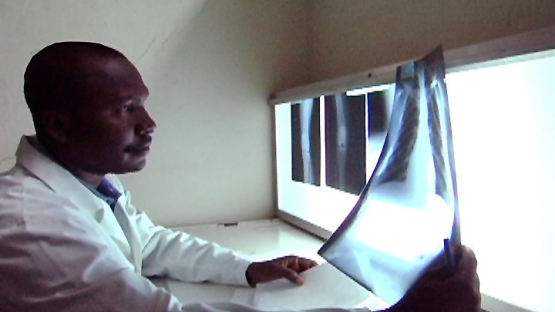Eight mobile X-Ray Units, purchased by the IAEA, are en route to Haiti as emergency medical relief for those injured in the earthquake that devastated the country two weeks ago.
Three digital and five analogue X-Ray machines will be used by doctors diagnosing and treating injuries. An estimated 250 000 injured require care, with the country´s radiography capabilities crippled.
"The mobile X-Ray units can operate in the temporary field hospitals that have been erected," Mr. Juan Antonio Casas-Zamora, Director of IAEA Division for Latin America, Technical Cooperation said.
"Immediately they will be used to help trauma patients in Porte-au-Prince and areas such as Leogane, Jacmel, Carrefour and Crois de Bouquet. But in coming months they will also be vital, with the rainy season approaching and thousands homeless - we´ll start to see a spate of respiratory infections in children, and other ailments where X-Rays are important for the diagnosis," Mr. Casas-Zamora said.
Siemens provided the X-Ray units at cost price to the IAEA in view of the humanitarian needs in Haiti. The units, totalling US$ 329 373, were sent from Erlangen, Germany to Santo Domingo, Dominican Republic, where they will be trucked to Porte-au-Prince. Power sources and the accessories needed to operate the mobile X-ray units to be used effectively and safely are also being delivered.
The Pan-American Health Organisation (PAHO) identified the health care centres and hospitals to receive the X-ray units, and is coordinating the shipment. PAHO alerted its partners, including the IAEA, that trauma care was one of the most urgent public health priorities.
The Agency is also working with its Member States including the Dominican Republic, Cuba, France and Venezuela to facilitate their offers of radiographers and technicians to operate the mobile X-Ray Units.
"The strong coordination with key partners like PAHO, the Haitian Government and other Member States in the region has allowed the IAEA to respond diligently to address this specific need," IAEA Deputy Director General of Technical Cooperation, Ms. Ana Maria Cetto said.
"Our effort to assist Haiti does not stop here. We are now looking to the post-emergency medical needs of the country and how, and where, the IAEA can best support the recovery," Ms. Cetto said.


